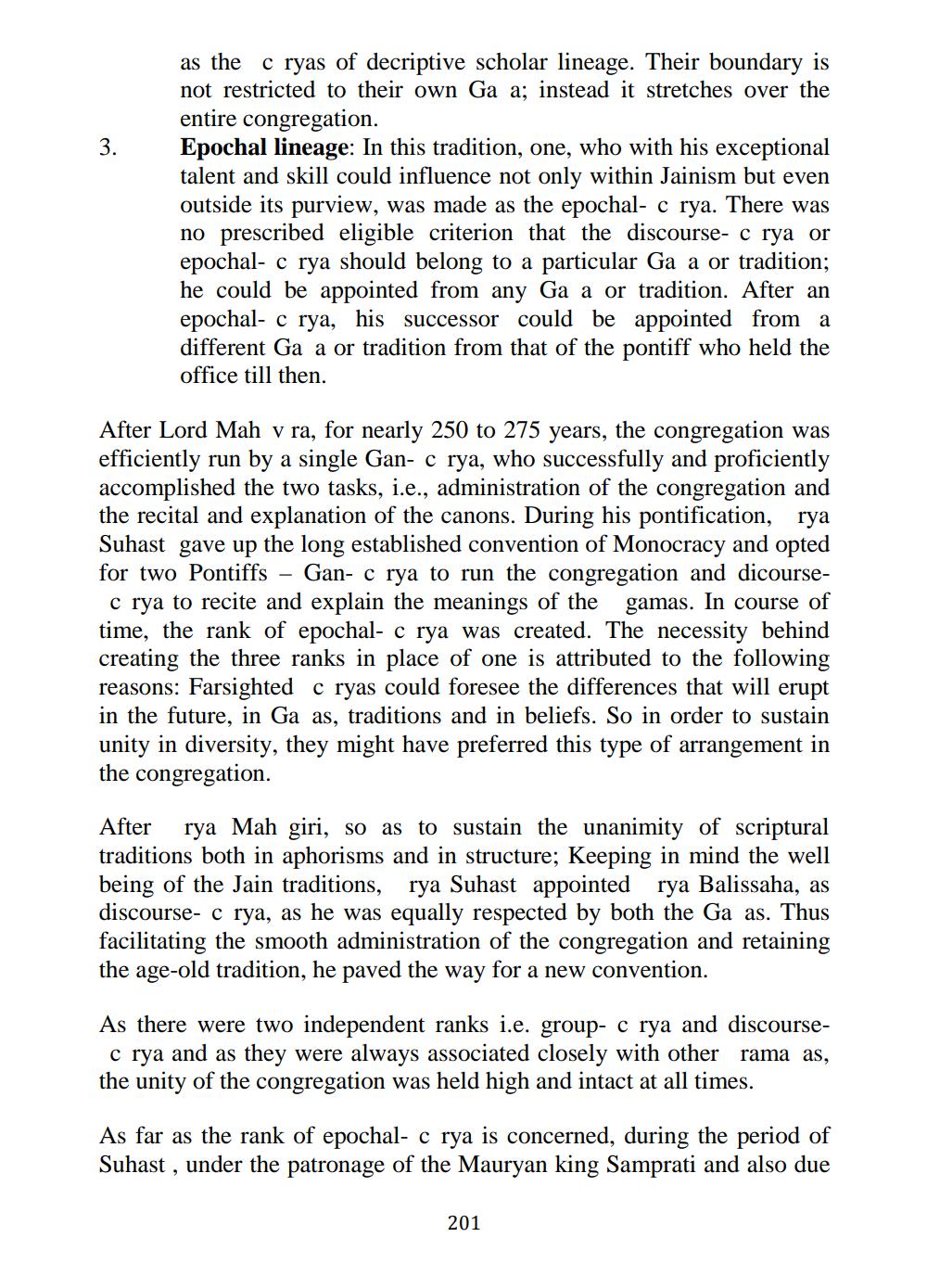________________
3.
as the
c ryas of decriptive scholar lineage. Their boundary is not restricted to their own Ga a; instead it stretches over the entire congregation.
Epochal lineage: In this tradition, one, who with his exceptional talent and skill could influence not only within Jainism but even outside its purview, was made as the epochal- c rya. There was no prescribed eligible criterion that the discourse- c rya or epochal- c rya should belong to a particular Ga a or tradition; he could be appointed from any Ga a or tradition. After an epochal- c rya, his successor could be appointed from a different Ga a or tradition from that of the pontiff who held the office till then.
After Lord Mah v ra, for nearly 250 to 275 years, the congregation was efficiently run by a single Gan- c rya, who successfully and proficiently accomplished the two tasks, i.e., administration of the congregation and the recital and explanation of the canons. During his pontification, rya Suhast gave up the long established convention of Monocracy and opted for two Pontiffs Gan- c rya to run the congregation and dicoursec rya to recite and explain the meanings of the gamas. In course of time, the rank of epochal- c rya was created. The necessity behind creating the three ranks in place of one is attributed to the following reasons: Farsighted c ryas could foresee the differences that will erupt in the future, in Ga as, traditions and in beliefs. So in order to sustain unity in diversity, they might have preferred this type of arrangement in the congregation.
—
After rya Mah giri, so as to sustain the unanimity of scriptural traditions both in aphorisms and in structure; Keeping in mind the well being of the Jain traditions, rya Suhast appointed rya Balissaha, as discourse- c rya, as he was equally respected by both the Ga as. Thus facilitating the smooth administration of the congregation and retaining the age-old tradition, he paved the way for a new convention.
As there were two independent ranks i.e. group- c rya and discoursec rya and as they were always associated closely with other rama as, the unity of the congregation was held high and intact at all times.
As far as the rank of epochal- c rya is concerned, during the period of Suhast, under the patronage of the Mauryan king Samprati and also due
201




